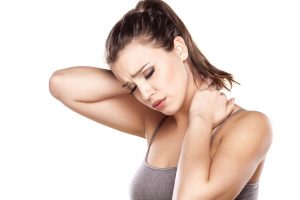Organised by Chronic Pain Australia, the week aims to champion the needs of Australians living with chronic pain. National Pain Week.
Facts and Figures
- In 2011 ‘back pain & problems’ were the third leading cause of disease burden in Australia.
- Low back pain is a World Health Organization priority disease and is the single largest contributor to disability worldwide.
- Headache disorders, including migraine and tension-type headache, are among the most prevalent disorders of mankind.
- Migraine, tension-type headache, and the combination of the two are the top three reasons people consult a doctor for headache.
- In the Global Burden of Disease Study, updated in 2013, headache disorders collectively were third highest cause worldwide of years lost due to disability (YLD).
- Neck pain is more prevalent in office workers than in the general community.
- The prevalence of neck pain in office workers has been reported to be between 50 and 76 % in Australia and 45–63 % internationally.
- Plantar fasciitis is reported to be the most common cause of chronic inferior heel pain.
- Musculoskeletal conditions are the third most common reason for patients seeking a consultation with a general practitioner in Australia. Shoulder conditions are in the top three of this group.
Acupuncture Evidence Base for Pain
The evidence base for acupuncture in managing pain symptoms are considered to have either a positive effective or potential positive effect. Further information about the evidence base is available at http://www.acupuncture.org.au.
Reviews with consistent statistically significant positive effects and where authors have recommended the intervention (Positive Effect):
- Acute and chronic low back pain (LBP) and is cost effective for both acute and chronic LBP.
- Chronic headaches & tension type headaches and is cost effective for both types.
- Migraine prophylaxis and is cost effective.
- Neck pain and is cost effective with usual medical care.
Reviews reporting all individual RCTs or pooled effects across RCTs as positive, but the reviewers deeming the evidence insufficient to draw firm conclusions (Potential Positive Effective):
- Plantar heel pain.
- Early stage shoulder impingement syndrome (potential positive effect with exercise).
Practitioner
Teresa Stevenson is a registered Chinese Medicine Practitioner (Acupuncture). She has a clinical interest in pain relief and management and works at Beach Box Physiotherapy on Tuesdays, Wednesdays, Thursdays and Saturdays. www.teresastevenson.com.au
References
AIHW, ‘Impact of chronic back problems‘, viewed 2 February 2018.
Allan, P & Britt, H 2015, ‘Plantar fasciitis in Australian general practice’, Australian Family Physician, vol. 44: 3, 2015, pp. 90-1.
Brun, Shane, ‘Initial assessment of the injured shoulder’, Australian Family Physician, April 2012;41(4):217-20.
Hoy et al, cited in McDonald J, Janz S., The Acupuncture Evidence Project: A Comparative Literature Review (Revised Edition). Brisbane: Australian Acupuncture and Chinese Medicine Association Ltd; 2017. http://www.acupuncture.org.au.
Hush, JM et al 2009, ‘Individual, physical and risk factors for neck pain in Australian office workers: a 1-year longitudinal study’, European Spine Journal, Oct, 18 (10), pp. 1532-40.
Johnston, V 2016, ‘Consequences and management of neck pain by female office workers: results of a survey and clinical assessment’, Archives of Physiotherapy, Jul 18, vol.6, pp. 1-8, doi: 10.1186/s40945-016-0023-3.
McDonald J, Janz S. The Acupuncture Evidence Project: A Comparative Literature Review (Revised Edition). Brisbane: Australian Acupuncture and Chinese Medicine Association Ltd; 2017. http://www.acupuncture.org.au.
WHO, Atlas of headache disorders and resources in the world 2011, Geneva: World Health Organization; 2011.
WHO, ‘Headache disorders factsheet (updated)’, viewed 2 February 2018, <http://www.who.int/mediacentre/factsheets/fs277/en/

